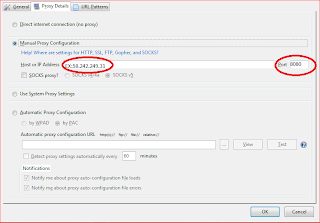In recent years a number of illicit techniques have grown up to artificially manipulate a
web site’s ranking. These techniques are referred to as spamming or sometimes “Black
hat” techniques. The “black hat” description refers to the fact that in the old western
movies the bad guys always wore black hats. The core of any spamming technique is the
attempt to deceive the search engine, and ultimately the site visitor, about the true nature
of a web site’s content.
 |
| What to avoid in SEO |
The question is whether spamming techniques actually deliver any long term benefit. In
addition, it is known that using proscribed spamming techniques can get the spammer,
their client sites and organisations delisted by the major search engines. It has happened
publicly in the past and the search engines particularly Google place great emphasis on
their warnings. Google even has a page for reporting spamming offenders.
I have identified a list of nine types of illicit SEO or spamming techniques.
- Keyword Stuffing
- Cloaking
- Doorway Sites
- Throwaway sites
- Mirror Sites
- Hidden Text
- Tiny Text
- Link Spamming
- Comment Spam
Keyword Stuffing
Keyword stuffing is the technique of excessively using lots of keywords with express
intention of influencing the search engines. Quite often this use appears in an
incomprehensible or ungrammatical manner. Keyword stuffing is often used in
conjunction with other spamming techniques such as cloaking, doorway sites, hidden text
and tiny text.
Cloaking
Cloaking is the technique whereby the web site visible to a site visitor is entirely different
from that seen by a search engine spider. The ordinary user may see one set of text and
images but underneath that image, or “cloak”, the site is “stuffed” with keywords. By
examining the cache of a cloaked site on the Google search results, we can see that the
site shows entirely different information to the spider, from that shown to the human eye.
Doorway Sites
A doorway site is a site that acts as a referring page for another site. The doorway page is
highly optimised – containing hidden links and keywords that the ordinary web user
never sees. The doorway site then climbs the search engine rankings but re-directs all of
its traffic to the target – and perhaps poorly optimised site.
Throwaway Sites
Throwaway sites are almost always doorway sites. They are web sites built by spammers
to provide a short-term and artificial boost to traffic. Once their traffic objectives are
achieved they are often switched off or left to decay – hence throwaway. Throwaway
sites are stuffed with links and keywords to attract and then re-direct traffic to a target
web site. Typically, the spammers retain ownership of the throwaway domain. The
spammers’ clients initially receive large amounts of traffic. But once the throwaway site
is switched off – or thrown away – the traffic comes to an abrupt halt and the clients
business suffers. The clients are then effectively blackmailed into spending vast sums to
retain traffic. The target web site receives no long term ranking benefits.
Mirror Sites
Mirror sites use an alternative URL to the target site but contain identical content. With
automated page production, there maybe hundreds of different URLs all with the same
content. This technique is sometimes referred to as domain duplication.
Hidden Text
The technique here is to fill or “stuff” a page with keywords invisible to the naked eye.
This is done by using the same colour for text as for the background page. This technique
is sometimes referred to as WOW, short for white on white.
Tiny Text
Tiny text is a technique of using very small text that is barely visible to the human eye.
This text can be read by the engines. However, the engines will also attribute this text as
spam.
Link Spamming
In many respects, due to the increasing influence of links, it was inevitable that link
spamming would become an issue. Spamming of links has been a growing problem as
many people have realised the importance that Google, in particular, places on links. As a
significant issue it raised its head in April 2005 when Google’s new release appeared to
ban one of the leading SEO firms from its rankings. Few people outside of Google and
the SEO firm concerned are entirely sure why this is the case. But the industry consensus
is that Google are cracking down on web sites and organisations that accumulate vast
numbers of irrelevant links with the sole intention of climbing the rankings.
Comment Spam
Related to link spamming is comment spam. Comment spam is where a spammer visits a
publicly accessible site and deposits a comment with an anchor text link back to a
designated site. Forums and blogs are typical target. This activity became identified as a
major problem in January 2005 when Google took steps to prevent it from the blogs of
Blogger.com. The reason was that spammers working for so called PPC (Pills, Porn and
Casino) web sites were trawling legitimate blogs and posting uninvited comment
advertisements with their web site’s anchor text. Blogs were vulnerable because they
typically possess a comment section that can be accessed without the need for passwords
or even registration.














